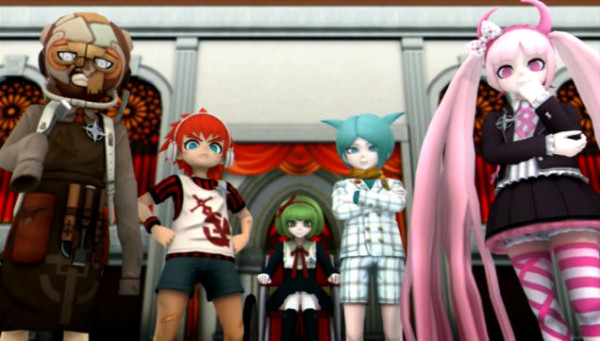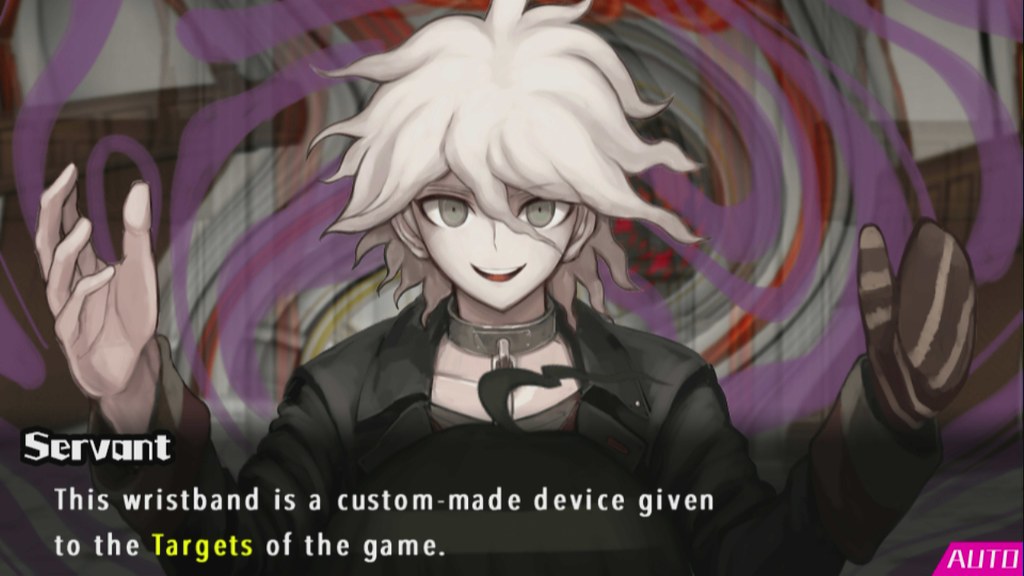Hope and despair. Like peanut butter and jelly.
Danganronpa has
become the premiere series for the Playstation Vita. Whenever I think of the
Vita, I don’t think about Sony’s failures at trying to make the system
relevant, or even as a JRPG machine, but as a system defined by Monokuma and
his killing games. The original two games are probably my favorite games on the
system, and with the recent announcement of a third game, I can’t help but get
all giddy at the prospect of more Danganronpa.
Before we get the inevitably awesome third game though, we
get a special little side story called Danganronpa
Another Episode: Ultra Despair Girls. But instead of it being a visual
novel, it’s a third person shooter. Instead of having a large cast of
characters, we get two main protagonists. Instead of having a single, small
location to explore, we get a whole city to traverse.
It goes without saying though that Ultra Despair Girls has some major flaws because of this radical
shift.
Our story takes place as a midquel between the first and
second game and involves the protagonist of the first game’s sister, Komaru
Naegi. You see, because of events from the first game, she was captured and
imprisoned in a hotel complex in Towa City. While she’s captured, an event
called The Tragedy takes place, where the Ultimate Despair, Junko Enoshima,
pretty much ended the world. Komaru emerges after The Tragedy and discovers
that Towa City, as well as her captors, are young children who call themselves
the Warriors of Hope. They want to kill every adult in Towa City, so they mark
you as a “demon” and force you out into the city to hunt you down and kill you.
All you have to do is survive, stop the kids, and escape Towa City.
It’s best to describe Ultra
Despair Girls as an attempt to blend the third person shooter and a visual
novel. At first, you’re assaulted with a barrage of cutscenes that last for
well over a half hour before you even get your first weapon. It doesn’t forget
its visual novel routes and smashes you over the head with as many story
elements as possible to the point where there’s too much story and not enough
gameplay. That was fine when it was a visual novel and the gameplay was
literally to read and interact with characters via text boxes, but action games
require more involvement. They’re not as passive, and Ultra Despair Girls approaches it as passively as possible.
I will not say the story is bad however. Granted, it’s not
as strong as the other two games and is a lot sloppier in terms of its
execution, but it’s still a relatively satisfying story. The biggest issue that
I have is that it leaves open way too many loose ends for my liking. The game
is deceptively short, lasting anywhere between 15-20 hours, but you never feel
like there’s any resolution. Things happen, characters appear and exit,
questions still remain, and nothing really gets solved. It’s a side story in
every stretch of the word. It doesn’t even help to clarify future events from Danganronpa 2. These plot points may be
picked up again in Danganronpa 3, but
I honestly don’t want them to be followed up on. They’re just not that
interesting to me.
Visually, the game still maintains the series morbid, yet
cartoonish look. Everything seems especially darker here, with more blacks,
greys, and purples than before, but the characters designs are still bright and
colorful as always. Even better, there are fully animated cutscenes included
here that are on quality of the 2013 anime series. It’s a treat to see these
cutscenes and makes me want to see the second game eventually adapted into an
anime.
But the biggest gripe that I have with this game is the
shift from visual novel to third person shooter. Yes, while I will always think
that the series is best as a visual novel, the gameplay here is just okay at
best. You are able to walk around the city and fight various Monokumas by using
you Hacking Gun. You can fight them with several different kinds of ammo and
solve puzzles by using said ammo as well. There are eight different types of ammo,
each of which offer up new ways to experiment with enemies. You can knock
enemies into pits with you knockback ammo, or use a dance ammo to keep an enemy
in place while you pelt them with machine gun burn ammo. I like the
experimentation, but that’s in theory.
In practice, all of the enemies will run straight at you,
offering very little incentive to change you style. If they just run at you
anyway, why try to be creative about it. I just pelted enemies with normal ammo
until they died. You do have the option to add powerups to your ammo, two per
bullet type, but they hardly amount to any substantial change.
You can play as a second character in this game named
Genocide Jack. Her gameplay is much simpler and essentially becomes a 3D beat ‘em
up. She can attack enemies with her scissors and launch insane special attacks
that do a lot of damage. However, she has a limited energy bar that drains as
she is active, so you should really only use her in dire situations. Once you
use her though, the game becomes a cake walk. There’s hardly any challenge at
all when Genocide Jack is in play, making an already easy game even easier.
As always though, Danganronpa
is incredibly dark in its content, and Ultra
Despair Girls is a downright mortifying game to play. Outside of the fact
that you have a game centered around children brutally killing adults, the
situations presented in this game are just morbid. You’ll read text that
describes how to murder adults, how badly adults want to kill their own
children, and the terrible misdeeds that happen to the Warriors of Hope. The
content was more disturbing here than I’ve encountered in any video game this
year, let alone in the past 10 years. Yes Five
Nights at Freddy’s alludes to dead children, but Ultra Despair Girls will tell you what happened to the kids, how it
psychologically scars them, watch them break down in front of you, then expect
you to kill them. You see a diorama or corpses dancing to a jolly song as they
are nailed and crucified in place. It goes beyond the realm of bad taste and
revels in its despair, leaving very little hope for the audience.
All of this is wrapped around the framework of the series,
but it doesn’t feel like it’s in bad taste. It just feels like it’s a normal
part of this world. It welcomes you to its darkness and instead of shirking
around any difficult subjects, it goes balls to the wall. When a little girls
makes out with a boy after crushing his ideologies and telling him that he’s
useless and meaningless to her, it doesn’t stop to explain how wrong it is. You
see it, feel sickened, and move on.
Ultra Despair Girls is
the weakest entry in the series by far. It has the least convincing gameplay,
the story has its problems, and I wished it felt a bit more fleshed out, but it’s
a game that I certainly will be remembering for years to come. I don’t know how
much impact it’ll play on future entries in the series, but as long as the
developers never make another shooter, this will be a misfire, but at least a
somewhat satisfying misfire.






No comments:
Post a Comment